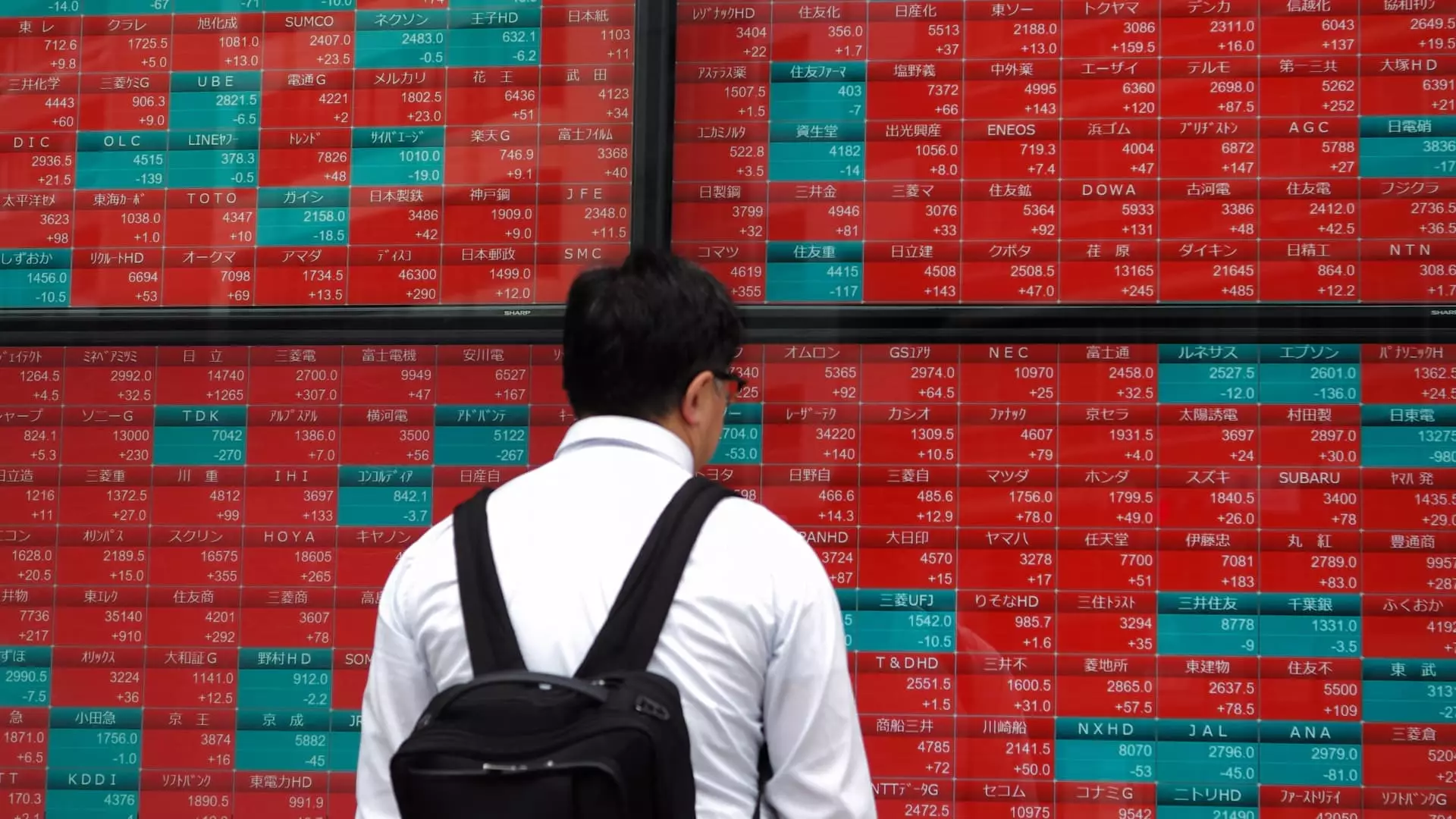Tuesday bore witness to a soured mood across Asia-Pacific markets, driven by mounting concerns surrounding U.S. tariff policies and the lurking specter of recession in one of the globe’s economic powerhouses. The dip began with Japan’s Nikkei 225, which descended by 1.7%, feeling the weight of considerably steeper declines earlier in trading. Underlying this downturn were significant hits to well-known companies like Konica Minolta, which suffered a staggering 7.07% loss, and Furukawa Electric, grappling with a 6.51% decline. In a broader sense, Japan’s Topix index mirrored this negativity, falling 1.95%, raising questions about the resilience of Asia’s economic giants in such a turbulent climate.
South Korean Woes and Chinese Stabilization
The malaise extended to South Korea, where the Kospi index plummeted by 1.26% and the tech-heavy Kosdaq saw a dip of 1.11% as market sentiments reflected trepidation about the future. However, across the waters, Hong Kong’s Hang Seng Index experienced a drop of 0.99% alongside Mainland China’s CSI 300, which slid by 0.54%. These declines suggest that confidence is waning, despite any tech advancements or governmental stimulus attempts that previously buoyed these markets. In Taiwan, the Taiex index rebounded slightly but still fell by 1.84%, showing how swiftly optimism can turn to pessimism when macroeconomic factors destabilize.
The Australian Dip Amid Political Uncertainty
Australia’s S&P/ASX 200 echoed the sentiment of loss, closing down 0.79% after a brief moment of optimism just the day prior. More troubling is that the market movement seems tied to political uncertainties and global economic policies that do little to bolster confidence. Meanwhile, India’s Nifty 50 opened lower as well, evidencing a collective retreat of confidence amidst fears of an economic downturn.
U.S. Markets: A Precursor to Global Pessimism?
The turbulence didn’t stop in Asia; U.S. markets took a nose-dive as fears about President Trump’s tariffs ignited worries of an impending recession. The S&P 500 faced a sizeable loss of 2.7%, plummeting to a level not seen since September, while the Nasdaq Composite echoed these declines with a staggering 4% drop, marking its worst day since September 2022. To reckon with a nearly 14% dip from its peak signifies deep trouble under the market’s surface, especially with the S&P 500’s 8.7% retreat from its all-time high merely a few months ago.
A Correction or a Crisis? Understanding the Trends
These developments feed into a narrative of escalating financial anxiety. Wall Street defines a correction as a 10% decline from peak values, and we are perilously close to hitting that mark. The reaction from markets suggests an urgent call for policy re-evaluation, especially in the context of increasing tariffs that could stifle growth rather than promote it. Traders and investors alike are left to ponder whether this slump is a mere correction, or the onset of a more protracted economic crisis. The notion that perilous market trends are interconnected can’t be ignored. As each index signals a downturn, it ‘feeds’ into a global apprehension, revealing cracks in what many hoped would be robust economic progress. Each trading day unfolds the severe consequences of inadequate policy responses and the wider implications for the average consumer and investor alike.


Leave a Reply